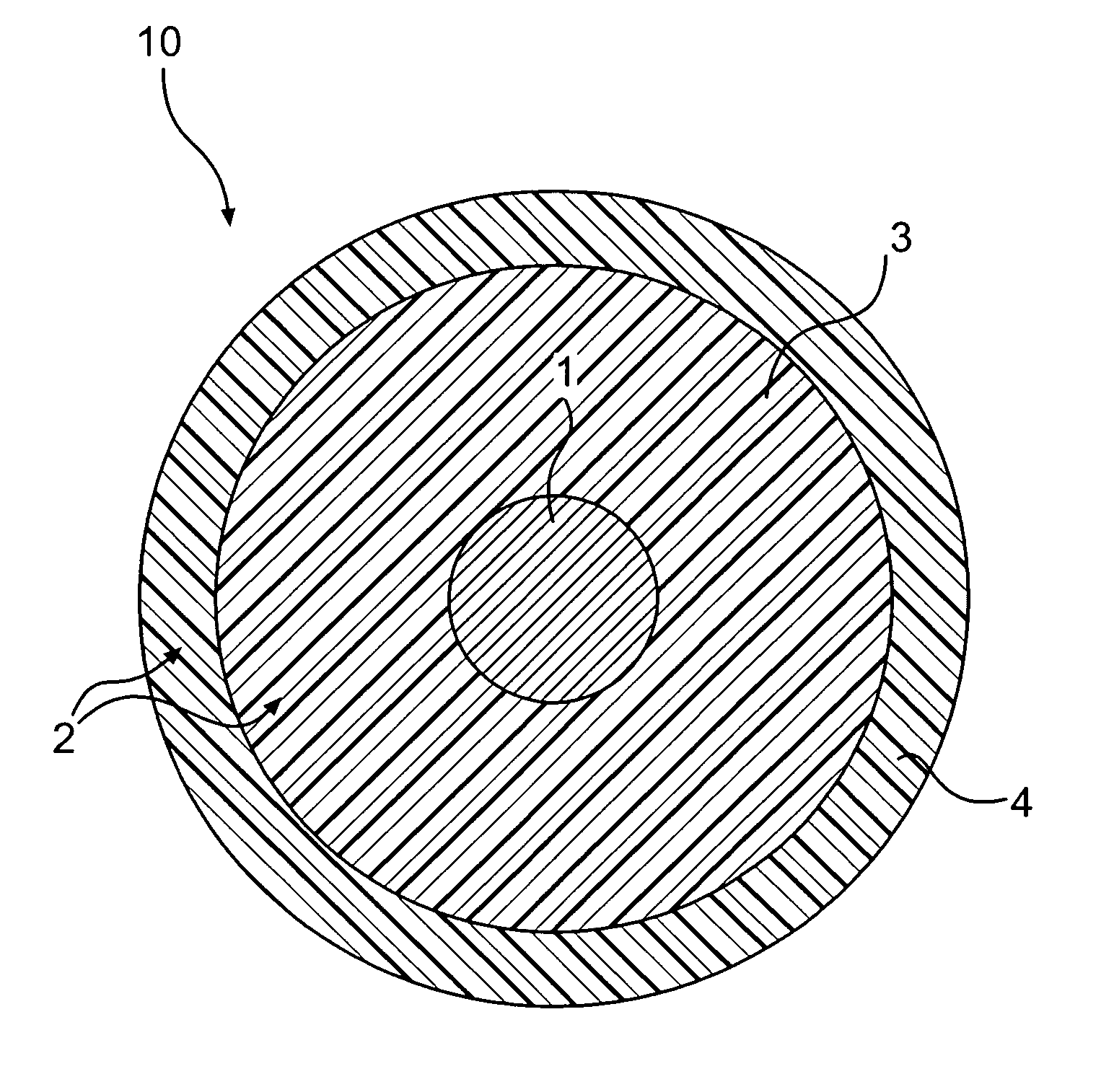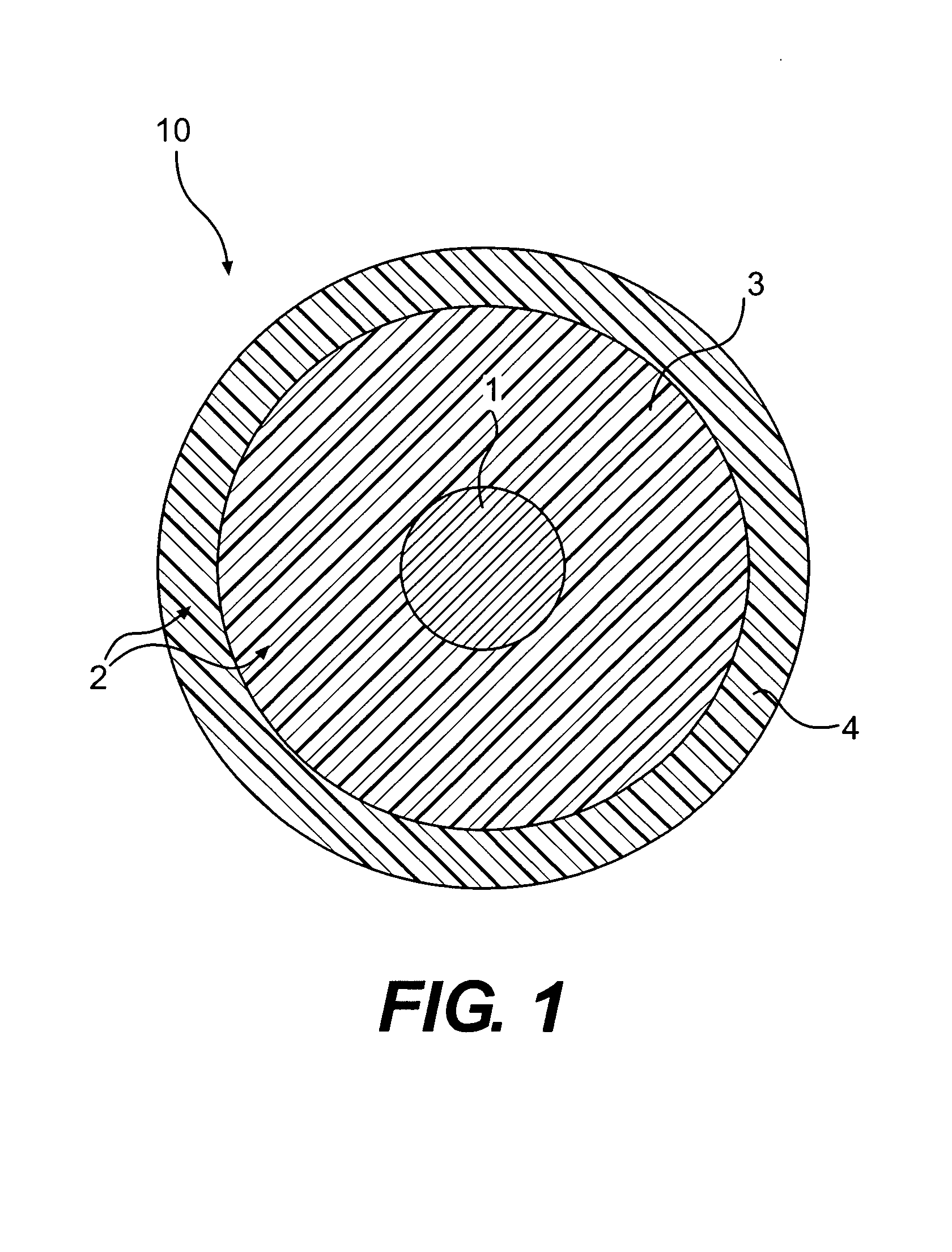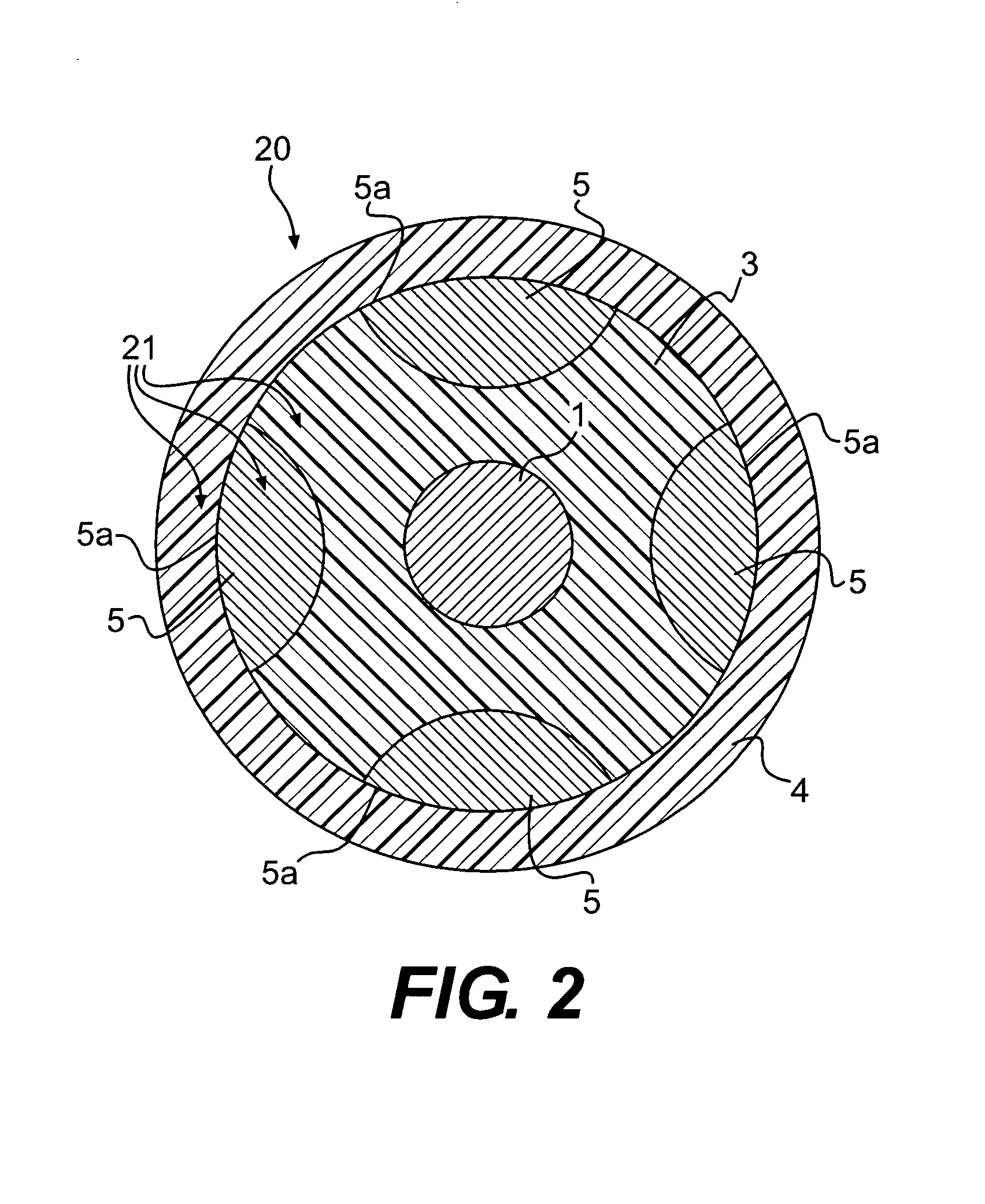Electric cable and manufacturing process thereof
- Summary
- Abstract
- Description
- Claims
- Application Information
AI Technical Summary
Benefits of technology
Problems solved by technology
Method used
Image
Examples
example 1
[0094]A first polymeric mix was prepared suitable for making the inner insulating layer of a cable insulating coating.
[0095]The composition of said mix is shown in Table 1 (expressed in parts by weight per 100 parts by weight of base polymer, or phr).
[0096]Except for the plasticizing agent, the components of said first polymeric mix were firstly mixed in a closed mixer working at a constant temperature of about 120° C. and achieving a suitable vacuum degree (i.e., a maximum residual pressure of about 100 mmHg). Successively, e.g. 10 sec after the introduction of the mix components, the plasticizing agent was introduced into said mixer. The polymeric mix, discharged at a temperature of about 120° C., was cooled at a temperature of about 70° C. and fed into an extruder. Thus, the extrudate was successively submitted to a pelletizing operation.
[0097]
TABLE 1PVC K70 Resin100(e.g. Evipol SH7020 ® producedby EVC)Antimony trioxide0.75Calcium carbonate60Bisphenol A0.62Stabilizing agent4Plast...
example 2
[0102]A second polymeric mix was prepared suitable for making the external insulating layer of a cable insulating coating.
[0103]The composition of said mix is shown in Table 2 (expressed in parts by weight per 100 parts by weight of base polymer, or phr).
[0104]The components of said second polymeric mix were subjected to process steps analogous to those described in Example 1.
[0105]
TABLE 2PVC K70 Resin100(e.g. Evipol SH7020 ® producedby EVC)Antimony trioxide3Calcium carbonate100Bisphenol A0.2Stabilizing agent8Plasticizing agent40Chlorinated paraffin18
[0106]Some samples in the form of plates were obtained from said pellets in order to carry out mechanical properties measures.
[0107]The flexural modulus of the polymeric material, before expansion, was measured at room temperature (20° C.) according to ASTM standard D790 and a value of 32.7 MPa was obtained.
[0108]Ultimate tensile stress was measured according to Standard IEC 60811 1-1 and a value of 14 MPa was obtained.
[0109]Ultimate el...
example 3
[0110]In order to obtain during the extrusion process the expansion of the external insulating layer, a master-batch of the second polymeric composition and of the expanding agent was prepared. The master-bach is reported in Table 3 hereinbelow (expressed in parts by weight-% wt).
[0111]
TABLE 3Second polymeric composition60% wtLAGOCELL20 ®20% wt(expanding agent)LAGOCELLBO20 ®20% wt(expanding agent)
[0112]LAGOCELL20® is azodicarbonamide, produce by Lagor S.p.A.
[0113]LAGOCELLBO20® is 4,4′-oxybis (benzenesulfonhydrazide, produced by Lagor S.p.A.
PUM
| Property | Measurement | Unit |
|---|---|---|
| Temperature | aaaaa | aaaaa |
| Temperature | aaaaa | aaaaa |
| Fraction | aaaaa | aaaaa |
Abstract
Description
Claims
Application Information
 Login to View More
Login to View More - R&D
- Intellectual Property
- Life Sciences
- Materials
- Tech Scout
- Unparalleled Data Quality
- Higher Quality Content
- 60% Fewer Hallucinations
Browse by: Latest US Patents, China's latest patents, Technical Efficacy Thesaurus, Application Domain, Technology Topic, Popular Technical Reports.
© 2025 PatSnap. All rights reserved.Legal|Privacy policy|Modern Slavery Act Transparency Statement|Sitemap|About US| Contact US: help@patsnap.com



